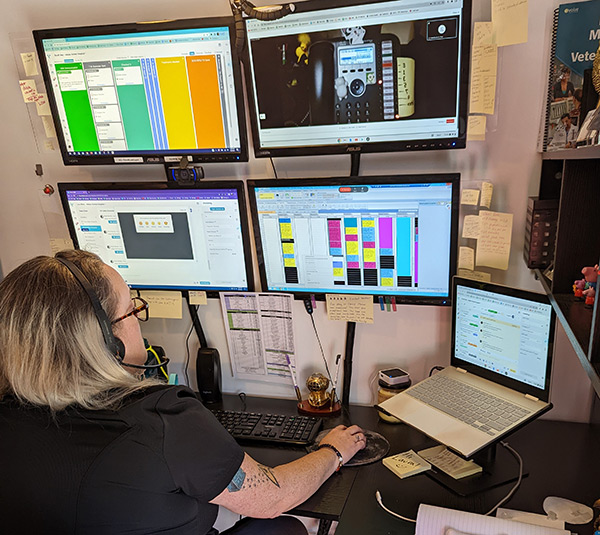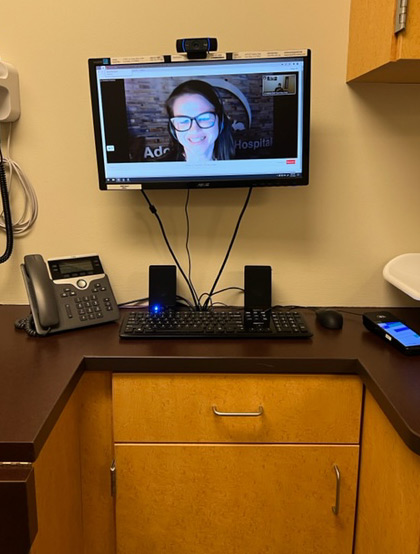A test case for remote work in veterinary practice
Walking into Adobe Animal Hospital Los Altos, visitors are greeted by a smiling face either at the front desk or on a screen. The clinic near San Jose, California, has both on-site customer service representatives (CSRs) and off-site video client representatives (VCRs) using the Otto platform. They work in tandem to usher clients and patients through their appointments.
At its sister hospital, Adobe Animal Hospital South Bay in Los Gatos, California, the front desk is only staffed by VCRs.
Both Adobe clinics allow these remote staff members to be patched into more than a dozen monitors around the hospital, from the front desk to the examination room and in the back office. They check clients in and talk with the medical team. At checkout, the in-house staff members let the VCRs know they’re finished with a patient, and using a wireless terminal in the examination room, the VCRs checks the client out in two minutes or less.
Summer Burke-Irmiter is a former hospital administrator and president of both Adobe South Bay and Los Altos clinics. “It’s definitely not groundbreaking, but we wanted to save time for the hospital team to care for patients in house,” she said.
Adobe has long been at the forefront of adopting new technologies largely thanks to Burke-Irmiter. Combined, they use around 30 remote team members help the in-house team be as efficient as possible.
Adobe Animal Hospitals started using Otto, formerly TeleVet, in 2019 for video visits. The clinics and other early adopting hospitals gave feedback to the Austin, Texas, based company, which designed software to meet their needs, such as exporting records to their practice management software (PIMS) or adding a chat function.
With a widget on the clinic’s website, clients can use the chat function to ask a question, request medical records, or make an appointment through a VCR. The chat logs can be loaded into the PIMS and transferred into the patient’s medical record. Since starting the program, the clinics have had around 60,000 individual chats with prospective or existing clients.
“What most people don’t realize is, as a chat agent, you can take one to six chats at a time,” Burke-Irmiter said, while a CSR can only take one call at a time. This allows team members to help more clients and do so faster.
She gave the example of a remote chat agent who could take three chats at a time: They could be talking with one client about her dog’s diarrhea and asking generic questions—‘How long has this been going on? What is the color? Is there any blood. Are they still eating?’—and while the agent waits for the client to answer, they can take another chat about, say, a cat that has fleas and another about someone making an appointment.
Burke-Irmiter said the clinic has been able to use technology so robustly because it has such a large remote team. An added benefit of using technology is that it allows the clinic to retain staff. “With short staffing and losing people being an issue in our industry, keeping (team members) because of technology is so worth it.”
She added, “The big thing is technology is not there to replace us. Technology is there to help us provide more personal service. I have a big belief in that.
“Whether it’s freeing up bandwidth for staff to walk through a euthanasia or surgery (with a client) or to make things more efficient so they’re not spending so much time importing information into medical records so they can spend time helping clients, patients, or even each other.”



